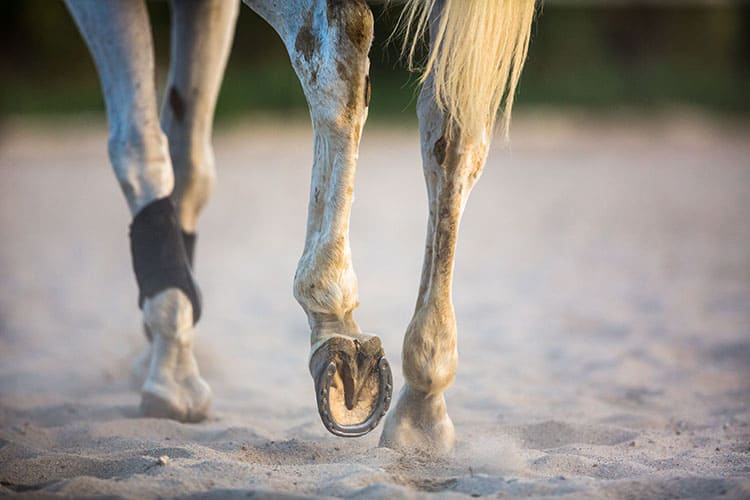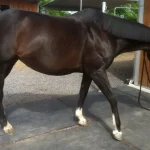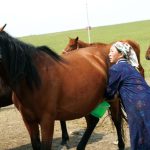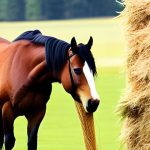Have you ever watched a show horse gracefully glide across the arena and wondered what makes their movements so fluid and captivating? Whether you’re a seasoned equestrian or just curious, the secret might lie in something as simple as shoeing.
You might be surprised to learn just how significant a role the right shoe can play in enhancing a horse’s performance. Imagine the thrill of seeing your horse move with elegance and precision, capturing the attention of judges and spectators alike.
This isn’t just about aesthetics; it’s about optimizing your horse’s potential. As you read on, you’ll discover how the right shoeing can make all the difference in your show horse’s movement, turning every stride into a work of art. Don’t miss out on understanding this crucial aspect that could redefine your horse’s performance on the show ground.

Credit: www.facebook.com
The Role Of Shoeing In Horse Movement
The role of shoeing in horse movement is crucial for show horses. Proper shoeing impacts how these horses move in competitions. It affects their balance, gait, and overall performance. Farriers play a key role in this process. They ensure that the shoes fit well and support the horse’s hooves. Understanding the connection between shoeing and movement can enhance a horse’s performance.
The Importance Of Correct Shoeing
Correct shoeing maintains a horse’s natural hoof shape. It ensures that their feet are balanced. This balance helps prevent injuries during movement. A well-shod horse moves more efficiently. It also experiences less strain on its joints.
How Shoeing Affects Gait
Shoeing can influence a horse’s gait. It can enhance or hinder the fluidity of their steps. The type of shoe used can adjust a horse’s stride length. This adjustment makes a big difference in show performances.
Choosing The Right Shoe Type
Different shoes serve different purposes. Some are designed for traction, while others provide shock absorption. The choice depends on the horse’s discipline and hoof condition. A skilled farrier will select the best shoe type for each horse.
The Role Of Farriers
Farriers are experts in equine foot care. They understand how to tailor shoeing to improve movement. Regular consultations with a farrier ensure the horse’s hooves are healthy. This regular care is vital for optimal performance in shows.
Balancing Hoof Health And Performance
Shoeing is not just about performance. It also focuses on maintaining hoof health. A healthy hoof leads to better movement. Regular trimming and shoeing are essential for this balance. Healthy hooves support a horse’s overall well-being.
Benefits Of Proper Shoeing
Proper shoeing can significantly enhance the movement of show horses. It’s not just about aesthetics; it’s about optimizing performance and ensuring the horse’s well-being. The right shoe can make a world of difference, offering benefits that go beyond just a smooth ride. Let’s explore how the art of shoeing can transform your horse’s performance on the showground.
Enhanced Performance
Proper shoeing can elevate your horse’s performance, giving them the support needed to execute precise movements. A well-fitted shoe provides stability, allowing horses to move confidently and gracefully. Imagine attending a show where your horse’s trot feels effortless, and every stride is consistent. The difference is palpable.
Consider how a runner feels wearing the right pair of shoes. Comfort and support translate into better performance, and the same applies to horses. Customized shoeing can address specific needs, whether it’s enhancing traction or improving balance. Have you ever noticed how a horse with the right shoe seems to glide across the arena?
Injury Prevention
Proper shoeing plays a crucial role in preventing injuries. Horses often face challenging terrains during shows, and the right shoe can minimize risks. It’s like wearing protective gear that shields them from potential harm. An ill-fitting shoe can lead to discomfort, affecting your horse’s gait and increasing injury risks.
Think about the last time you wore uncomfortable footwear. Pain and discomfort likely followed, impacting your ability to walk or run smoothly. Horses experience similar issues, and addressing this with appropriate shoeing can prevent such setbacks. Would you risk your horse’s health by ignoring their shoeing needs?
Ultimately, the benefits of proper shoeing extend beyond mere functionality. It’s about ensuring that your horse performs at their best while safeguarding their health. As a horse owner, you have the power to impact their showground success with something as simple yet profound as shoeing. Are you ready to make that difference?
Types Of Horseshoes Used In Shows
Different horseshoes can enhance a show horse’s movement. Lightweight aluminum shoes offer grace, while steel shoes provide strength and support. Rubber shoes add comfort, reducing joint impact.
Understanding the types of horseshoes used in shows can greatly influence how your show horse moves and performs. Different shoes serve different purposes, enhancing the horse’s natural gait and protecting their hooves. If you’ve ever wondered how to give your horse that extra edge in the ring, this knowledge is crucial.Steel Shoes
Steel shoes are the traditional choice for many show horses. They’re known for their durability and strength, offering long-lasting protection. If your horse performs in demanding events, steel shoes might be the best option for you. They provide stability, which can be crucial for maintaining balance during intricate maneuvers.Aluminum Shoes
Aluminum shoes are lighter than steel, offering a different set of advantages. They are often used for horses that require speed and agility. A lighter shoe means less weight for the horse to carry, potentially improving the horse’s speed. Have you ever noticed how a lighter load makes you feel more nimble? The same concept applies to horses.Specialized Shoes
Specialized shoes cater to specific needs, addressing unique movement requirements or hoof conditions. They can include features like pads, wedges, or traction devices. These are particularly useful if your horse has hoof issues or if you’re aiming to enhance specific aspects of your horse’s movement. Think of it as customizing a pair of running shoes to fit your personal stride perfectly. Choosing the right type of horseshoe can be pivotal for your horse’s performance in shows. Each shoe type has distinct advantages, and selecting the right one can make a noticeable difference. Have you considered how a simple change in footwear could transform your horse’s show performance?
Credit: www.equestriansurfaces.co.uk
Techniques In Shoeing Show Horses
Techniques in shoeing show horses are crucial for optimizing their performance and ensuring their well-being. A well-shod horse can move with grace and precision, captivating audiences and judges alike. As a horse owner or enthusiast, understanding these techniques can help you make informed decisions that enhance your horse’s performance in the ring.
Balancing The Hoof
Balancing the hoof is a fundamental technique in shoeing that directly affects a horse’s movement. It’s not just about aesthetics; a well-balanced hoof ensures even weight distribution, which can prevent injuries. Imagine attending a show and noticing your horse stumbling slightly—could it be the imbalance in the hooves?
To achieve this balance, farriers carefully trim the hoof to align with the natural angle of the horse’s pastern. This requires a keen eye and experience, as each horse has unique hoof structures. Regular checks and adjustments are necessary as horses’ hooves grow and change over time.
Corrective Shoeing
Corrective shoeing addresses specific issues that may hinder a horse’s performance. Whether it’s a gait problem or a conformational defect, corrective shoeing can make a significant difference. Have you ever seen a horse with an unusual gait suddenly transform after a session with a skilled farrier?
This technique involves customizing shoes to support or redirect the horse’s movement. For example, a horse with a tendency to toe-in might benefit from a shoe that encourages straight movement. Corrective shoeing is a collaborative effort between the farrier, trainer, and sometimes a veterinarian, ensuring the horse’s comfort and performance.
Understanding these shoeing techniques can empower you as a horse owner. It allows you to communicate effectively with your farrier and ensure your horse is in top condition for shows. Have you ever tried any of these techniques on your horse? What changes did you observe?
Impact Of Shoeing On Gait And Posture
The shoeing of horses is not just about protection. It can change how show horses move. Proper shoeing affects both gait and posture. A horse’s movement can improve with the right shoeing. This helps in competitions. Every step matters in the show ring. The way a horse stands can also change. This can prevent injuries and enhance performance.
Influence On Stride Length
Shoeing impacts a horse’s stride length. The right shoe can extend the stride. This makes the horse’s movement more graceful. A longer stride can lead to better scores in shows. It also makes the horse look more elegant. The shoe’s weight and shape play a role. These factors change how each leg moves. A well-fitted shoe helps horses move naturally.
Effect On Joint Alignment
Proper shoeing aligns a horse’s joints. Good alignment reduces stress on joints. This can prevent joint problems in the future. Proper alignment ensures even weight distribution. This is important for balance. A balanced horse moves more smoothly. Incorrect shoeing can cause misalignment. This may lead to discomfort or injury. Expert shoeing keeps joints healthy and aligned.
Common Challenges In Shoeing
Common challenges in shoeing show horses often disrupt their performance. Proper shoeing can make a significant difference. Yet, it is not always straightforward. Many factors play a role in shoeing success. Each horse has unique needs. Fitting shoes requires skill and understanding. Here are some challenges faced by farriers and owners.
Finding The Right Fit
The right fit is crucial for a horse’s comfort. Ill-fitting shoes cause discomfort and affect movement. Every horse has a unique hoof shape. Adjustments are often necessary. Farriers need patience and precision. Incorrect sizes lead to gait problems. A well-fitted shoe supports the hoof structure. It enhances performance in the show ring.
Managing Hoof Health
Hoof health is a top priority for show horses. Poor hoof health impacts movement and performance. Regular trimming is essential. It prevents overgrowth and imbalance. A balanced hoof supports even weight distribution. Farriers must check for cracks and infections. Healthy hooves lead to better movement. Proper shoeing maintains this health.
Consulting With Farriers
Consulting with farriers is a crucial step in improving how your show horse moves. Farriers are specialists in horse hoof care and shoeing, and their expertise can significantly impact your horse’s performance. By working closely with a skilled farrier, you can ensure that your horse receives the best care tailored to its specific needs.
Choosing A Skilled Professional
Finding the right farrier is like choosing the right partner for your horse’s success. Look for someone with experience in shoeing show horses, as they will understand the unique demands of the arena. Ask for recommendations from other horse owners or trainers who have seen real improvements in their horses’ movements.
Check credentials and certifications to ensure your farrier is qualified. A skilled professional should be open to discussing their approach and explaining how different shoeing techniques can benefit your horse. Don’t hesitate to ask questions to gauge their knowledge and willingness to collaborate.
Collaborating With Trainers
A farrier’s work doesn’t happen in isolation. Engaging your horse’s trainer in the process can lead to even better results. Trainers can provide insights into how your horse moves and what specific changes might be needed.
Regular meetings involving both the farrier and the trainer can help align shoeing strategies with training objectives. This collaboration ensures your horse’s shoeing plan is well-rounded and supports its overall performance goals. Consider setting up a schedule for routine checks to assess progress and make necessary adjustments.
Have you ever wondered if your horse’s shoes are holding it back? Consulting with a farrier and collaborating with a trainer might just be the key to unlocking your horse’s full potential in the show ring.
Future Trends In Equine Shoeing
Shoeing can help show horses move better. It offers better balance and comfort during performances. New techniques focus on customizing shoe design to match each horse’s unique needs. These changes can lead to noticeable improvements in movement and overall performance in the ring.
The world of equine shoeing is experiencing a fascinating transformation. As technology advances, so do the methods and materials used in horse shoeing. This evolution is not just about keeping up with trends; it’s about enhancing the performance and well-being of show horses. Imagine a future where shoeing not only protects a horse’s hooves but also optimizes its movement. Are you ready to discover what lies ahead in this exciting field?Innovative Materials
The materials used in equine shoeing are becoming more advanced. Traditional metal shoes are giving way to new materials that are lighter and more flexible. Imagine shoes made from composite materials that conform to the horse’s hoof, providing support without adding extra weight. These innovative materials are not just about comfort. They can also reduce strain on the horse’s legs, potentially preventing injuries. Picture a show horse gliding gracefully across the arena with shoes that enhance its natural gait. Could these new materials redefine what we expect from horse performance?Advanced Techniques
Modern technology is transforming shoeing techniques. Farriers are now using 3D printing to create customized shoes that fit perfectly. This precision ensures that each shoe supports the horse’s unique hoof shape and movement pattern. Have you ever considered how a perfect fit could change a horse’s stride? Advanced techniques also include the use of sensors in shoe design. These sensors can monitor a horse’s movement, providing real-time data on how the shoe impacts its gait. This data allows for adjustments to be made on the fly, ensuring optimal performance. Can you imagine the advantage this gives in competitive settings? The future of equine shoeing is not just about keeping pace with technology. It’s about enhancing the partnership between horse and rider. By embracing these future trends, you can ensure your show horse moves with grace and power. What will you do to stay ahead in this evolving field?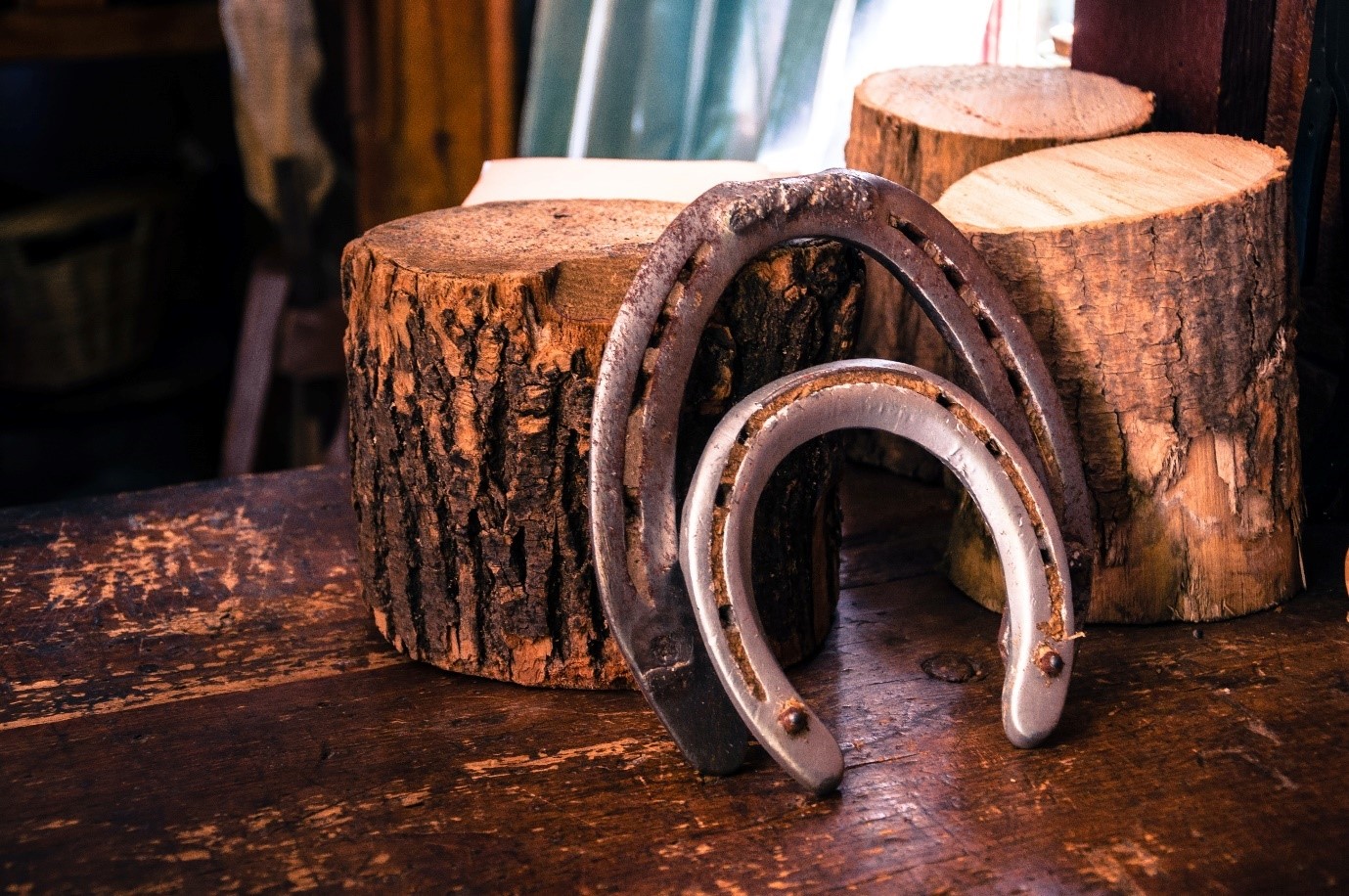
Credit: horseandcountry.tv
Frequently Asked Questions
How Does Shoeing Affect Horse Movement?
Shoeing can significantly impact a horse’s movement by providing traction and support. Proper shoeing can enhance gait and balance. It may help in achieving smoother strides and reducing stress on joints. However, incorrect shoeing can lead to discomfort and impaired movement.
Can Shoeing Improve Horse Performance?
Yes, shoeing can improve performance by optimizing the horse’s gait and stability. Well-fitted shoes can enhance grip and reduce slipping. This is especially beneficial for show horses that require precise movements. Correct shoeing can also prevent injuries, contributing to consistent performance.
Is Shoeing Necessary For Show Horses?
Shoeing is often necessary for show horses to maintain optimal movement. It provides protection and support, improving performance. Shoes can prevent hoof damage during competitions. However, shoeing needs to be tailored to the horse’s specific needs for maximum benefit.
What Types Of Shoes Are Best For Show Horses?
Show horses benefit from shoes designed for traction and comfort. Aluminum shoes are lightweight and enhance speed. Steel shoes offer durability and are often used in high-performance settings. The choice depends on the horse’s discipline and hoof condition.
Conclusion
Shoeing can impact a show horse’s movement positively. Proper shoeing enhances stability. It can improve balance during performances. Horses might move more fluidly with the right shoes. This adjustment boosts their performance potential. Careful shoe selection is key. Consider the horse’s unique needs.
A skilled farrier’s expertise is vital. They tailor shoeing to the horse’s requirements. Owners should collaborate with farriers. Together, they can optimize the horse’s movement. This leads to better show results. Shoeing is a valuable tool in enhancing horse performance.
It supports graceful and controlled movements in the arena.

